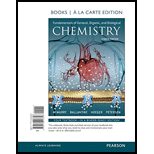
Concept explainers
Interpretation:
Reason for skin does not dissolve when going for swimming is to be identified.
Concept introduction:
Many amino acids are linked together through amide bonds to form a biologically large molecule known to be proteins.
Amino functional group is
Secondary structure of protein is the repeating structural patterns (
Fibrous protein is a tough, water insoluble protein whose protein chains form fibers or sheets.
Want to see the full answer?
Check out a sample textbook solution
Chapter 18 Solutions
Fundamentals of General, Organic, and Biological Chemistry, Books a la Carte Edition (8th Edition)
- Can water make your whole body heathyarrow_forwardTannic acid and picric acid can be used in the treatment of burns. Why are these tannins used for the treatment of burns?arrow_forwardLiquid foods are heated more rapidly than solid foods. Which mains at certain temperature, liquid foods need shorter time than do need solid foods to destroy microorganisms, Why?arrow_forward
- What property of water helps retain heat in the water when air temperature drops? cohesion evaporation density adhesionarrow_forwardIn a hurry one day, you merely rinse your lunch disheswith water. As you are drying your salad bowl, you noticethat it still has an oily film. Why was the water alone noteffective in cleaning the bowl?arrow_forwardUnwrapped food placed in a freezer experiences dehydration, known as “freezer burn.” Why?arrow_forward
 Human Physiology: From Cells to Systems (MindTap ...BiologyISBN:9781285866932Author:Lauralee SherwoodPublisher:Cengage Learning
Human Physiology: From Cells to Systems (MindTap ...BiologyISBN:9781285866932Author:Lauralee SherwoodPublisher:Cengage Learning



